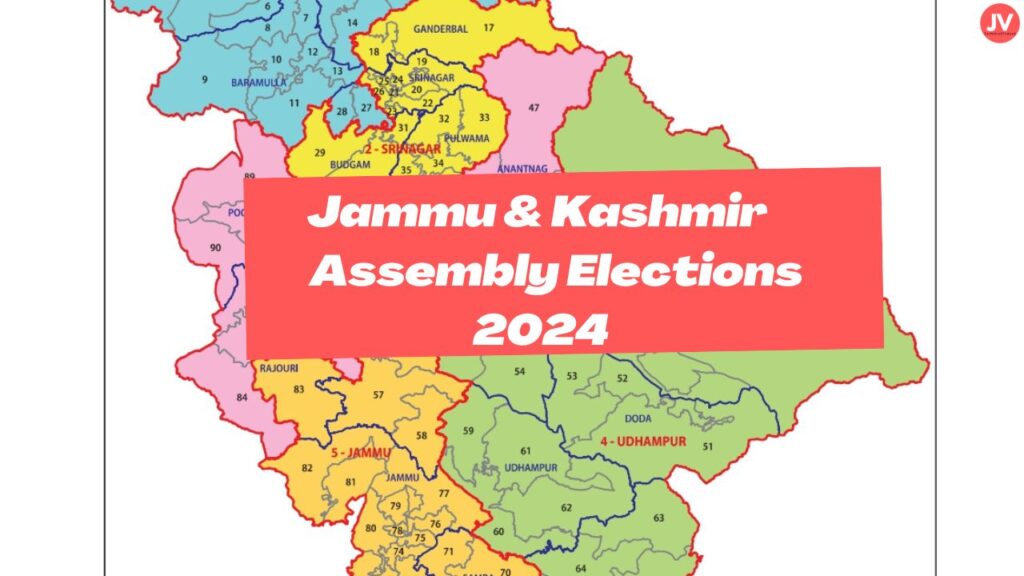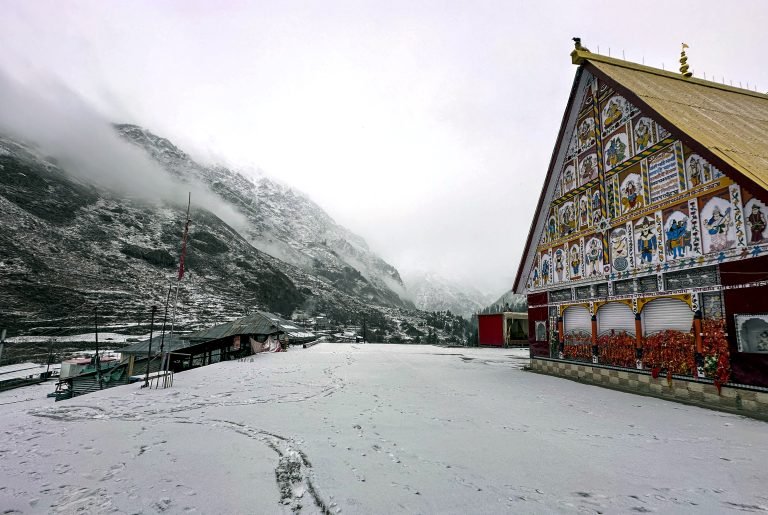The first phase Assembly Elections 2024 Jammu & Kashmir marks a significant event in the region’s political landscape, will see polling for the first phase on September 18. This phase is not merely an electoral process but a crucial step towards redefining the democratic structure of Jammu and Kashmir. With high stakes and intense political rivalry, this article delves deep into the key players, constituencies, and the overall electoral environment.

As the last date for withdrawal of nomination papers for 24 Assembly Constituencies in the first phase Assembly Elections Jammu Kashmir ended on 30 Augest evening, a total of 219 candidates remained in the fray. In Kashmir, 155 candidates are contesting across 16 Assembly constituencies spread over four districts of Anantnag, Kulgam, Pulwama, and Shopian.
Political Landscape: A Clash of Major Parties
The political environment in Jammu and Kashmir is witnessing a fierce contest among prominent parties in the first phase Assembly Elections Jammu Kashmir. The Bharatiya Janata Party (BJP), National Conference (NC), People’s Democratic Party (PDP), and Congress are leading the charge, each with distinct agendas aimed at securing a majority.
1. Bharatiya Janata Party (BJP) Strategy and Influence
BJP has been focusing on its narrative of development and national security, appealing to voters with promises of economic progress and stability. The party’s campaign highlights the abrogation of Article 370 as a pivotal achievement, projecting it as a move towards integrating Jammu and Kashmir more closely with the rest of India.
2. National Conference (NC) and Regional Priorities
NC, with its deep roots in the region, is campaigning on issues related to regional autonomy and safeguarding the identity of Jammu and Kashmir. The party aims to connect with voters through promises of restoring special status and addressing unemployment and infrastructure deficiencies.
3. People’s Democratic Party (PDP) and Its Appeal to Youth
PDP, known for its appeal to the younger demographic, is emphasizing peace and dialogue. The party’s strategy revolves around reinstating dialogue with stakeholders in the region and improving the education and employment sectors, which are critical concerns for the youth.
4. Congress and the Fight for Secularism
Congress is positioning itself as a centrist force, promoting secularism and unity. The party is focusing on the promise of inclusive development and countering the polarizing narratives of other parties. It seeks to regain its foothold by appealing to diverse communities across the region.
Critical Constituencies: Battlegrounds of Influence
The first phase covers several key constituencies that are considered battlegrounds due to their strategic importance and the tight contests expected within them.
1. Kupwara: A Test of Regional Dominance
Kupwara has traditionally been a stronghold for regional parties like NC and PDP. However, with BJP making inroads, this constituency will be a critical indicator of regional versus national influence. Voter concerns here range from infrastructure development to job creation, making it a microcosm of the larger electoral landscape.
2. Bandipora: Focus on Development and Security
In Bandipora, the electorate’s focus is primarily on development and security. The constituency is witnessing a three-way contest among BJP, NC, and PDP. Each party’s ability to address local issues, such as road connectivity and public services, will be a deciding factor in swaying voters.
3. Ganderbal: Balancing Tradition and Change
Ganderbal is a politically sensitive area with a history of high voter turnout. Known for its balance between traditional values and progressive aspirations, the contest here reflects the broader dynamics of change versus status quo. Parties are vying for influence by highlighting a mix of development agendas and preserving regional heritage.
The highest number of candidates—14—are contesting in the Pampore Assembly Constituency in Pulwama district, while the lowest—three—are contesting in the Srigufwara-Bijbehara Assembly Constituency in Anantnag district.
Read also: Lok Sabha Election Results 2024 Jammu & Kashmir
Voter Sentiments: Aspirations and Concerns
The electorate in Jammu and Kashmir is diverse, with varying aspirations and concerns across different demographics and regions.
**1. Security Concerns
Security remains a predominant concern, especially in regions with a history of unrest. Voters are looking for assurances of safety, stability, and economic opportunities that can alleviate the long-standing challenges faced by the region.
**2. Economic Development and Employment
Unemployment is a significant issue driving voter sentiment. With the region’s economy impacted by political instability and limited private sector investment, parties are focusing heavily on job creation, skill development, and promoting tourism as key economic strategies.
**3. Restoration of Special Status
For many voters, especially in the Kashmir Valley, the restoration of special status is a deeply emotive issue. Parties like NC and PDP are using this as a central theme to rally support, while BJP counters with promises of more tangible economic benefits as a replacement for the erstwhile autonomy.
Key Contestants in the first phase Assembly Elections 2024 Jammu & Kashmir
In the first phase Assembly Elections Jammu Kashmir key contestannts include senior Congress working committee member Ghulam Ahmed Mir, Iltija Mufti, daughter of Peoples Democratic Party Chief Mehbooba Mufti, CPIM leader Mohammed Yousuf Tarigami, PDP youth leader Waheed Para, former MP and National Conference leader Hasnain Masood, senior NC leader Sakeena Itoo, BJP leader Sofi Youusf, and Talat Majeed, a former member of banned Jamaat-e-Islam, among others.
Election Day Dynamics: Security Measures and Voter Turnout
The Election Commission has put in place stringent security measures to ensure a smooth voting process. Heavy deployment of security forces, along with surveillance technologies, aims to create a safe environment for voters. High voter turnout is expected to reflect the electorate’s desire for change and active participation in the democratic process.
Over 23.27 lakh voters, which include 11.76 lakh male voters, 11.51 lakh female voters and 60 third gender electors, are eligible to exercise their electoral franchise during the Phase-I of the Jammu and Kashmir elections.
















